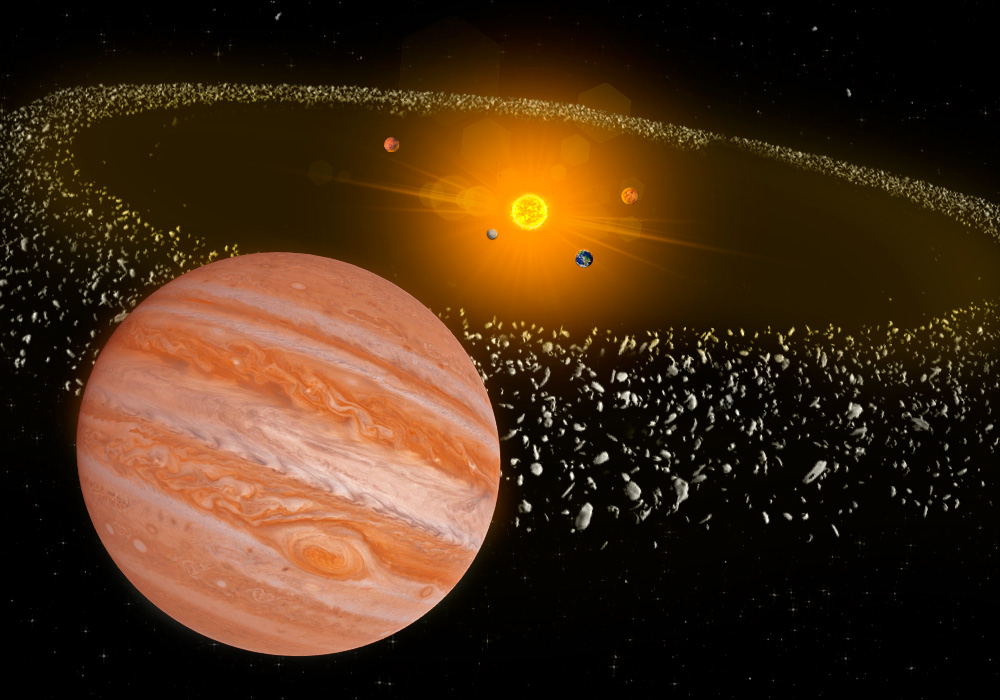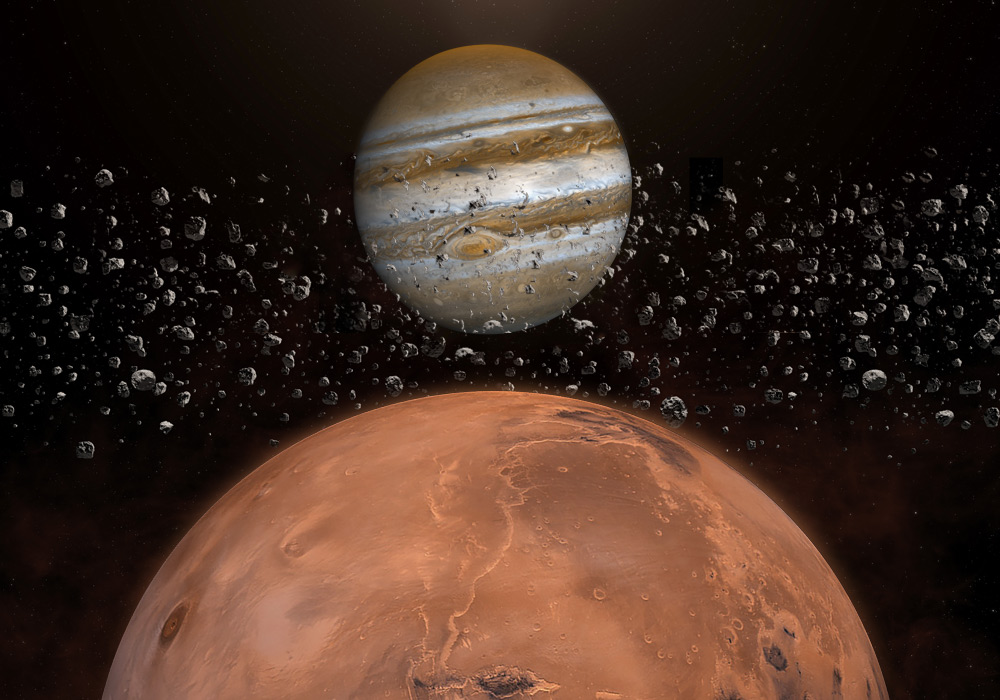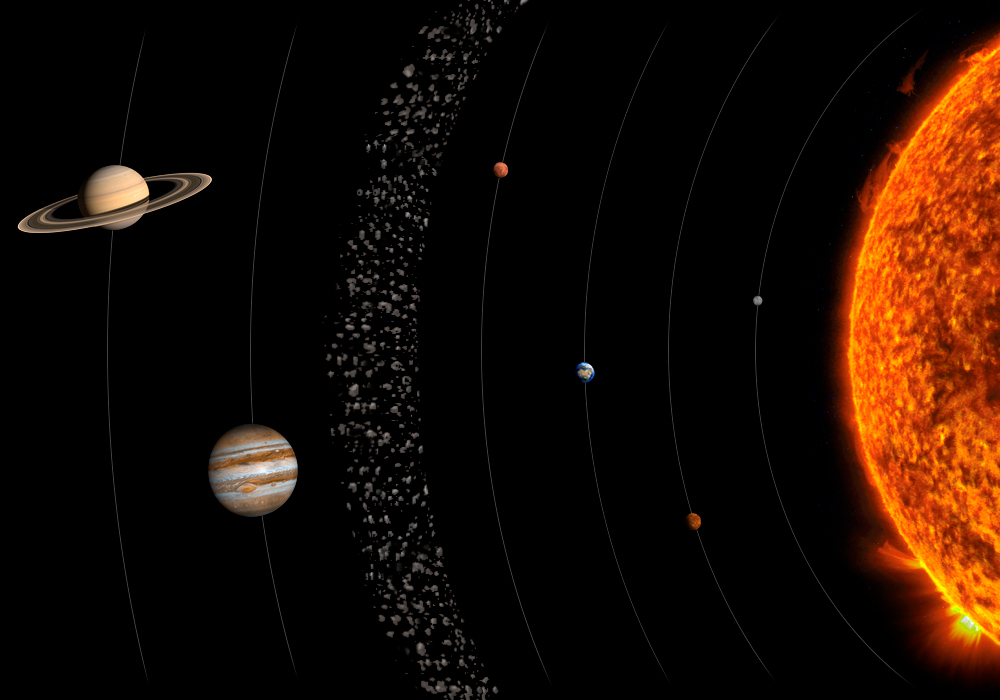Scientists think the asteroid belt has important clues about how our solar system began. Each rock has a story about how it formed and what it’s made of. This area’s different sizes and materials help us see how planets formed millions of years ago. By studying these space rocks, we learn about the past and how asteroids might affect Earth in the future.
Lately, people have been interested in mining asteroids. These rocks could have metals and water we could use for space missions. As technology improves, we might explore the asteroid belt to mine resources and find new ways to live in space. But we need to be careful because big asteroids could hit Earth. Scientists want to explore while keeping an eye on possible dangers. They’re trying to understand this part of space better.

asteroid belt facts
The asteroid belt is a big space area between Mars and Jupiter. It’s like a busy road with lots of rocky objects called asteroids. Here are some cool things about it:
Location:
The asteroid belt is in the inner solar system, about 2.2 to 3.2 astronomical units (AU) from the Sun. One AU is the average distance from the Earth to the Sun, about 93 million miles (150 million kilometers).
Composition: Asteroids in the belt come in different sizes, from tiny pieces to big ones hundreds of miles across. Most of them are made of rock and metal, like Earth and Mars.
Formation:
Scientists think the asteroid belt is made of leftover stuff from when the solar system began. This stuff never formed into a planet because Jupiter’s strong gravity kept it apart. So, it became lots of small objects instead.
Ceres: The biggest thing in the asteroid belt is Ceres. It’s called a dwarf planet, about 590 miles (940 kilometers) wide. Ceres is a big part of all the stuff in the asteroid belt.
Spacecraft exploration:
Many spaceships have gone to the asteroid belt to study its rocks up close. For example, NASA’s Dawn spaceship went around Ceres, giving us a good look at its surface and what it’s made of.
Collision risks:
Even though many asteroids are in the belt, they’re far apart. That means collisions between them are rare. Sometimes, asteroids can crash into each other and make smaller pieces. These pieces could be a danger to spaceships exploring the area.
Potential resources: Some scientists and space groups want to go to the asteroid belt to find useful stuff like metals, water, and other valuable things. Mining asteroids could give us important things for future space trips and help us live in space.
In short, the asteroid belt is a really interesting part of our solar system. It helps us learn about how things began and could allow us to explore and use resources in space in the future.

asteroid belt between Mars and Jupiter
The asteroid belt is a big space between Mars and Jupiter, filled with many small rocky things called asteroids. Scientists believe these asteroids are leftover material from when our solar system formed billions of years ago. Jupiter’s strong gravity prevented these materials from forming into a planet like Earth, so they remained as small bits. The largest object in the asteroid belt is Ceres, which is classified as a dwarf planet. Most of the asteroids in the belt are much smaller and orbit the Sun in a circular path with plenty of space between them.
Related Contents:
How did the asteroid belt form?
Once upon a time, when our solar system was starting out, tiny bits of dust and rocks moved around the Sun. Because of gravity, these bits came together to form big things like planets.
But not everything became a planet. Some of these bits stayed small and ended up in the asteroid belt. It’s like a big ring of rocks between Mars and Jupiter.
Some folks wonder if this asteroid belt was once a planet that broke apart or if it never really got going as a planet at all. But NASA says the asteroid belt weighs less than the moon. So, it’s too light to be called a planet. Instead, Jupiter’s gravity kept the bits from sticking together and forming new planets.
Discovery of the asteroid belt
Once upon a time, there was a smart astronomer named Johann Titius. He looked at how planets were arranged in space and thought he saw a pattern. He thought there might be another planet between Mars and Jupiter. Many astronomers went searching for this missing planet. In 1800, 25 astronomers joined forces and formed a team called the Celestial Police to find it. But a different astronomer, Giuseppe Piazzi from Italy, who wasn’t part of the team, saw the first object there. He named it Ceres. Later, they found another object called Pallas.
At first, people thought Ceres and Pallas were planets. However, scientists realized they were too small to be planets as they found more similar objects, over 100 in total. So, they called them asteroids instead.
Conclusion
In conclusion, the asteroid belt teaches us how our solar system began. People first thought it might have a missing planet, but instead, it’s full of many small rocks. This helps us understand how our neighborhood in space began long ago. Because of astronomers like Johann Titius and findings like Giuseppe Piazzi’s, we now realize the asteroid belt is important to our cosmic history, not a planet that didn’t make it. As we continue to explore and study these leftovers from when the solar system started, the asteroid belt gives us important hints about space’s mysteries and our place in it.



